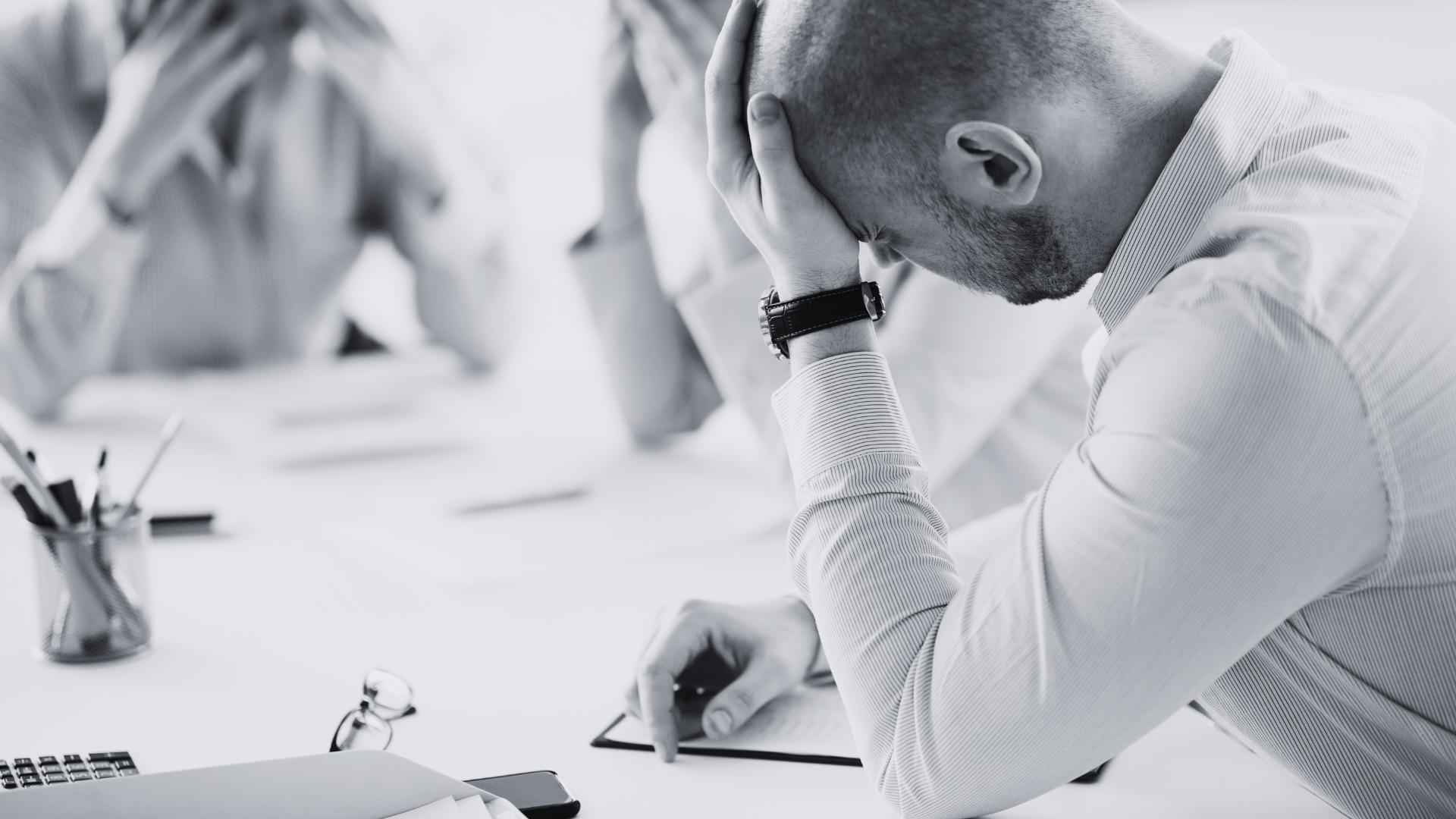How to Manage Team Stress and Uncertainty with Neuroscience
Today uncertainty often seems like the only certainty. Whether prompted by global economic shifts, technological advancements, or internal organizational changes, this uncertainty can significantly impact workplace morale and productivity. How do leaders navigate these murky waters and keep their teams engaged and efficient? Neuroscience might just hold the key.
Recent studies suggest that nearly 45% of employees experience high levels of uncertainty in their roles, which can lead to stress and decreased performance.
Neuroscience offers us a fascinating window into how our brains handle the unknown and provides actionable strategies for managing these challenges effectively. By understanding and applying insights from the human brain, leaders can foster a workplace environment that not only withstands uncertainty but thrives in it.
In this article, we will talk about four neuroscience-based strategies to manage workplace uncertainty, ensuring your team remains focused, innovative, and above all, confident in the face of change. Join us as we explore how the latest scientific findings can be transformed into practical tools for dynamic leadership.
Understanding Uncertainty and Its Impact on the Brain
Uncertainty in the workplace isn't just a challenge to manage logistically; it also poses a significant psychological burden on employees. To effectively address this issue, it's crucial to understand how the brain processes uncertainty and the resulting impacts on behavior and productivity.
The Brain's Response to Uncertainty
When faced with uncertainty, the human brain activates a network of regions involved in processing threats and rewards. The primary player here is the amygdala, which triggers the body's stress response system, leading to heightened levels of cortisol, the stress hormone.
While this response can be beneficial in short bursts, prolonged exposure to uncertainty can lead to chronic stress, impacting overall well-being and cognitive function.
Another key area is the prefrontal cortex, responsible for planning complex cognitive behavior, personality expression, decision-making, and moderating social behavior. Under stress, its capacity to make well-considered decisions and regulate emotions is significantly impaired.
This can lead to what is often termed 'decision paralysis,' where the ability to make decisions is slowed or halted due to overwhelming uncertainty.
Consequences of Chronic Uncertainty
Constant uncertainty can sap employees' energy and focus, reducing their overall output and the quality of their work.
As uncertainty takes its toll on the prefrontal cortex, employees might struggle with making decisions, big or small, affecting everyday operations and long-term planning.
Uncertainty can create an environment of fear and anxiety, leading to decreased job satisfaction and higher turnover rates.
Understanding these neurological impacts helps frame why managing uncertainty isn't just about improving business outcomes, it's also about caring for the mental health and well-being of every team member.
Neuroscience-Based Strategies to Manage Uncertainty
With a foundational understanding of how uncertainty affects the brain, let's jump into actionable strategies that leverage neuroscience to foster resilience and adaptability in the workplace.
Strategy 1: Promoting Psychological Safety
Psychological safety is a critical factor in enabling employees to thrive in uncertain environments. It refers to the belief that one will not be punished or humiliated for speaking up with ideas, questions, concerns, or mistakes.
Creating a psychologically safe environment can help reduce the activation of the amygdala, the brain's fear center, thereby minimizing stress responses and fostering a more open and innovative workplace culture.
Implementation Tips:
Regular team meetings where all members are encouraged to speak freely can reinforce safety.
Show vulnerability as a leader by sharing your own challenges and how you are addressing them.
Acknowledge not just successes but also the effort and courage it takes to tackle difficult issues.
Strategy 2: Enhancing Neuroplasticity Through Learning and Development
Neuroplasticity is the brain's ability to reorganize itself by forming new neural connections throughout life. This ability can be harnessed to help employees adapt more effectively to change and uncertainty.
Continuous learning environments stimulate the production of brain-derived neurotrophic factor (BDNF), a protein that supports neuron growth and protection, enhancing cognitive flexibility.
Implementation Tips:
Offer training programs that cover a range of skills from technical to soft skills.
Allow employees to engage in projects outside their usual scope to help them gain a broader perspective and adapt to new challenges.
Support employees in pursuing external educational opportunities that align with their personal and professional goals.
Strategy 3: Mindfulness and Emotional Regulation
Mindfulness training can significantly improve emotional regulation, reducing the impact of stress and enhancing decision-making capabilities under uncertainty.
Regular mindfulness practice can increase the density of the prefrontal cortex and reduce the size and reactivity of the amygdala, promoting a more rational and less fear-driven response to stress.
Implementation Tips:
Offer guided meditation sessions or subscriptions to mindfulness apps.
Designate quiet spaces in the workplace where employees can go to decompress and practice mindfulness techniques.
Train leaders in mindfulness so they can lead more thoughtfully and with greater awareness of their impact on others.
Strategy 4: Clear Communication and Predictability
Uncertainty often stems from a lack of information or not understanding future directions. Clear communication can help mitigate these triggers.
Transparent communication helps reduce the brain’s search for threats, allowing employees to focus more on their tasks and less on hypothesizing about unknowns.
Implementation Tips:
Even if the news is that there are no updates, regular communication helps prevent the rumor mill.
Provide clear project timelines and role expectations to minimize ambiguity.
Establish open channels where employees can request and receive information when they feel it is lacking.
Implementing these neuroscience-backed strategies not only helps manage the direct impact of uncertainty but also builds a more resilient and adaptive organizational culture.
Resources
Research Papers
"Neural Correlates of Uncertainty and Decision Making" by J. D. Cohen et al. This paper explores the brain mechanisms involved in decision-making under uncertainty, focusing on the roles of different brain regions. Link to paper
"The Neuroscience of Leadership: The Effects of Leader-follower Dynamics on the Brain" by R. Waldman et al. This study examines how leadership styles affect the neurobiology of leaders and followers, emphasizing the impact of psychological safety and stress. Link to paper
"How Psychological Safety Affects Team Performance: Mediating Roles of Efficacy and Learning Behavior" by K. Newman. This research details the pathways through which psychological safety influences team learning behaviors and performance outcomes. Link to paper
Articles
"Why Psychological Safety Matters and How to Create It" by Amy Edmondson (Harvard Business Review). An accessible article by the leading researcher on psychological safety, explaining the concept and its importance in organizational settings. Link to article
"Neuroplasticity: Changes in Grey Matter Induced by Training" by B. Draganski et al. (Nature). Discusses how intensive learning can induce changes in grey matter structure, which has implications for training and development in a professional setting. Link to article
"The Neuroscience of Trust" by Paul J. Zak (Harvard Business Review). This article explores how trust affects the neurochemicals in the brain and outlines management behaviors that foster trust and cooperation in teams. Link to article
These resources can support the practical application of neuroscience-based strategies in managing workplace uncertainty. By leveraging these, leaders can enhance their team’s resilience, adaptability, and overall well-being, leading to sustained performance even in the face of continuous change.
FAQ Section: Managing Uncertainty in the Workplace Using Neuroscience
1. What is psychological safety and why is it important in times of uncertainty?
Psychological safety is the belief that one can speak up, share ideas, and ask questions without fear of punishment or embarrassment. In times of uncertainty, psychological safety becomes crucial as it encourages open communication and innovation, allowing teams to adapt more quickly and effectively to changing conditions.
2. How can mindfulness actually change the brain?
Mindfulness practices have been shown to affect the brain's structure and function. Regular mindfulness can increase cortical thickness in the hippocampus, which governs learning and memory, and decrease cell volume in the amygdala, which is responsible for fear, anxiety, and stress. These changes help enhance focus, reduce stress responses, and improve emotional regulation.
3. Can neuroplasticity be developed in any employee, regardless of age?
Yes, neuroplasticity, or the brain's ability to form and reorganize synaptic connections, particularly in response to learning or experience, can occur at any age. While it is more active during childhood, adults can also enhance their neuroplasticity through activities that challenge their cognitive and emotional skills, such as learning new skills, engaging in complex problem-solving tasks, and maintaining a healthy lifestyle.
4. What are some quick ways to promote psychological safety in virtual teams?
Promoting psychological safety in virtual teams can be achieved by:
Regular Check-ins: Hosting frequent virtual meetings not just about work progress but also to discuss challenges and personal experiences.
Encourage All Voices: Make a conscious effort to invite opinions from quieter team members, ensuring everyone feels their input is valued.
Celebrate Mistakes: Highlight lessons learned from failures as a team to promote a culture that sees errors as a part of the learning process.
5. How does clear communication reduce uncertainty?
Clear communication helps mitigate uncertainty by ensuring all team members are aware of current expectations, future directions, and organizational changes. This transparency helps align team efforts, reduces rumors and misinformation, and provides a sense of stability even in turbulent times.
6. Are there any risks associated with implementing these neuroscience-based strategies?
While there are minimal risks associated with implementing these strategies, potential challenges include resistance to change and the misconception that focusing on psychological aspects might detract from 'hard' business metrics. Addressing these challenges requires continuous education and demonstrating how these strategies lead to improved business outcomes.
7. How often should we train our employees in mindfulness and neuroplasticity-enhancing techniques?
The frequency can vary based on the organization's objectives and the specific needs of its employees. However, introducing regular sessions, such as weekly mindfulness practice and monthly workshops on new skills or concepts, can help maintain and enhance the benefits.
8. What metrics can be used to measure the effectiveness of these neuroscience-based interventions?
Effectiveness can be measured through several metrics, such as employee engagement surveys, turnover rates, productivity metrics, and feedback on innovation and problem-solving effectiveness. Regular assessment of these areas can provide insights into how well the interventions are working and guide further adjustments.



















